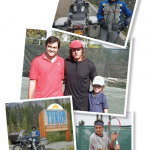Even at their wildest, physicians are a pretty staid lot, and any secrets that are hidden are not likely to be all that shocking. Many of the secrets are actually an achievement in another realm, like being the chess champion of Baltimore or the glockenspiel player in all-state band in Wisconsin. Nevertheless, I am always amazed by how much personal history is forgotten or erased once a person starts a career as a physician. Medical training is a powerful homogenizer of people—a veritable Waring blender of personality—to emulsify and pulverize any chunks of real individuality that may persist in the face of a curriculum that can be genuinely deadening. By the end of an education that can extend over a decade, trainees have a remarkable sameness, whatever their place of origin, family background, or prior pursuits.
Over the years, I have discovered that, among the medical students, house officers and fellows with whom I worked, I trained people who had prior lives as a ballet dancer, public health nurse, Army medic, opera singer, particle physicist, professional rock climber, desk clerk at a YMCA, oil engineer, drug representative, veterinarian, lawyer, and commander of a nuclear submarine. Not a speck of these remarkable life journeys showed in the work of these people, however, since all behaved virtually identically on the ward or in the clinic. I gleaned this information mostly by accident or inquiring why my medical student was 40 and had two children in high school.
Of this group, I especially liked the lessons I learned from the submariner. He had a sharp, precise manner—actually, he was a bit tightly wound—and was perpetually exasperated by the generally haphazard way we organized the ward work, bristling and fuming over our tardiness on rounds. When I asked him how to run things better, he said dryly, “Simple. Post a duty roster.” I had to suppress my laugh; the notion of a duty roster on a teaching service is downright ludicrous. With a straight face, I asked, “And if that doesn’t work?” “Take away shore leave,” he said with surprisingly seriousness, his eyes tough and steely, befitting a person who could give the command to launch a nuclear strike.
Connect the Past with the Present
As we wended our way to the airport, traffic came to a standstill, and my good friend Dr. D. turned to one of the woman rheumatologists in the limo—an up-and-coming clinical investigator whose age is probably less than 40—who was a member of his division. Let us call her Dr. M. With a bit of mischief in his eyes, Dr. D. asked, “Do you want to tell us about yourself?” Dr. M. smiled and made a small wave of her hand to signify her demurral.


